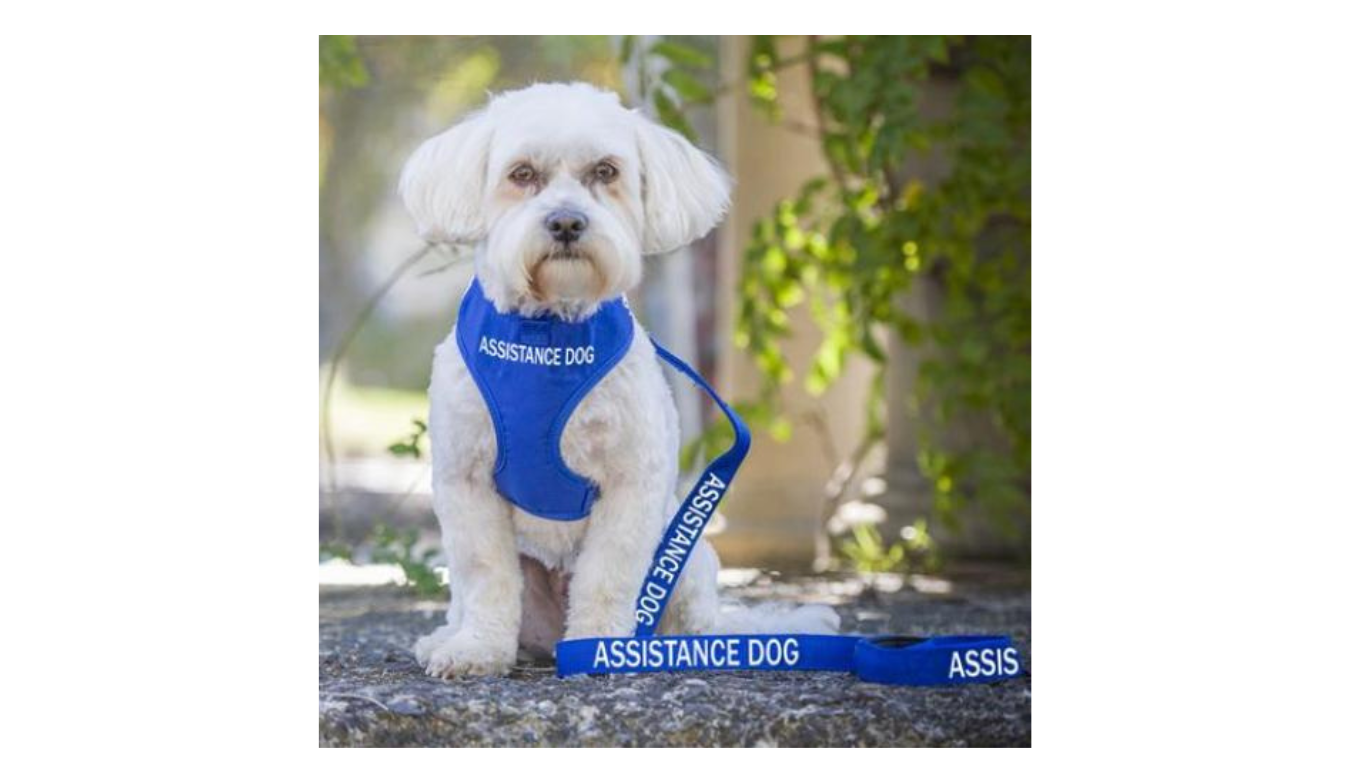
May 25 , 2020
The Truth about Assistance Dogs in Australia
For hundreds of years, dogs have long been considered man’s best friend. Our relationships with canines have evolved over the years from serving humans in a myriad of tasks to be our loyal companions, even considered family. Dogs are highly intelligent, trainable and adaptable. Therefore, dogs have been chosen as the most popular animal to assist humans in an official capacity. No doubt, Assistance Dogs and Therapy Dogs are both beneficial to the humans they help. However, a lot of confusion exists as to the differences between Therapy Dogs, Assistance Dogs, and Service Dogs
What Sets Them Apart?
The most notable difference between THERAPY and ASSISTANCE DOGS is their classification under legislation. Assistance Dogs are considered a medical aid, specifically trained to assist a person with visible and non visible disabilities. They are given additional permissions and protections under the law than pet dogs.Therapy Dogs are pets, and while they may offer therapeutic support, are not considered a medical necessity. Therapy Dogs are not required to meet any legislated standards, while Assistance Dogs are required to meet behaviour and hygiene standards.
Therapy Dogs
Therapy Dogs are used in animal-assisted activities, providing therapy and education. They are usually handled by their owner and provide comfort and affection to people in long-term care, hospitals, retirement homes, schools, mental health institutions, and other stressful situations. A Therapy Dog can access places like schools, hospitals, and retirement homes for their visits, but do not have full access to public spaces under the law. Therapy Dogs are beneficial for boosting morale and have a positive psychological effect on the recipients.
Emotional Support Animals
Similar to a Therapy Dogs is an Emotional Support Dog (abbreviated to ESA). An ESA may support a person through depression, anxiety or other medical conditions, but this does not mean that the animal is specifically trained to do so. Emotional Support Animals are not recognised under Australian law and therefore do not have the same public rights access an Assistance Dogs would.
Assistance Animals and Service Dogs
As their name suggests, Assistance Dogs are trained to assist a person with a disability to alleviate the effect of the disability, perform everyday activities, have increased mobility, and to be more independent. Traditionally,Assistance Dogs have predominately been recognised as a ‘guide dog’ for the blind, or people with a vision impairment. However, they can also aid those who experience psychiatric disorders.
Assistance Dogs are often referred to as Service Dogs, a term more commonly used in North America. They are a working animal, highly trained for disability support. Assistance Animals have public access rights and are now protected by the Disability Discrimination Act 1992 (Australia).
Who Regulates the Law for Assistance Dogs in Australia?
In Australia, the Disability Discrimination Act 1992 (commonly referred to as the DDA), section 9 sets out the legal definition of an assistance animal like a dog or other animal that:
(a) is accredited under a State or Territory law to assist a person with a disability to alleviate the effects of disability; or
(b) is accredited by an animal training organisation prescribed in the regulations; or
(c) is trained to assist a person with a disability to alleviate the effect of the disability and meets standards of hygiene and behaviour that are appropriate for an animal in a public place.
Public Awareness
While Assistance Dogs and Therapy Dogs help their human companions navigate life a little easier there are still many challenges for their handlers. The public needs to recognise that these animals are on the clock, working to aid their humans and must not be distracted.Assistance Dogs should not be petted (unless you have the express permission of the person handling the dog) but even this we discourage as the handler may feel obliged when they would much prefer to say 'no'. The dog is a medical necessity and their focus needs to be directed on their persons. Therapy Dogs that visit public institutions job is to socialise and serve as ambassadors, providing stress relief and comfort to those they meet during their visits. These dogs and handlers are happy to spend time with you. It is important to know the difference between an Assistance Dogs and a Therapy Dog, but when in doubt admire from a distance.
Assistance Dog Apparel
Whilst most trainers do provide some sort of visible signage for the dog to wear it generally falls short of being clear enough to alert the public that the dog is working and should NOT be approached with most being geared towards the promotion of the company and can be overly expensive for those on limited incomes.
What you DO NEED TO KNOW is that an Assistance Dog or Service Dog is actually NOT legally required to wear apparel at all, what they are required to do is present either a 'Handler Identity Card' OR 'Medical Certification' when requested to do so on entering spaces such as a shopping centres, public transport, etc.
Those who 'choose' for their dog to visibly wear ASSISTANCE DOG or SERVICE DOG do so as a service to the general public so that they are well advised to NOT approach or touch their dog.
For those concerned, Friendly Dog Collars legal team have more than followed the legal requirements and it should be noted that we are not breaking any 'perceived' laws by offering these items to those who need them.
Please be advised that by publicly accusing us of doing so falls under defamation (If you state or spread something defamatory in any public forum, including over the internet, you could be taken to court) resulting in legal action taken.
If you have an ASSISTANCE OR SERVICE DOG please be sure to also checkout our DO NOT PET collection as others are getting great results teaming the two together

